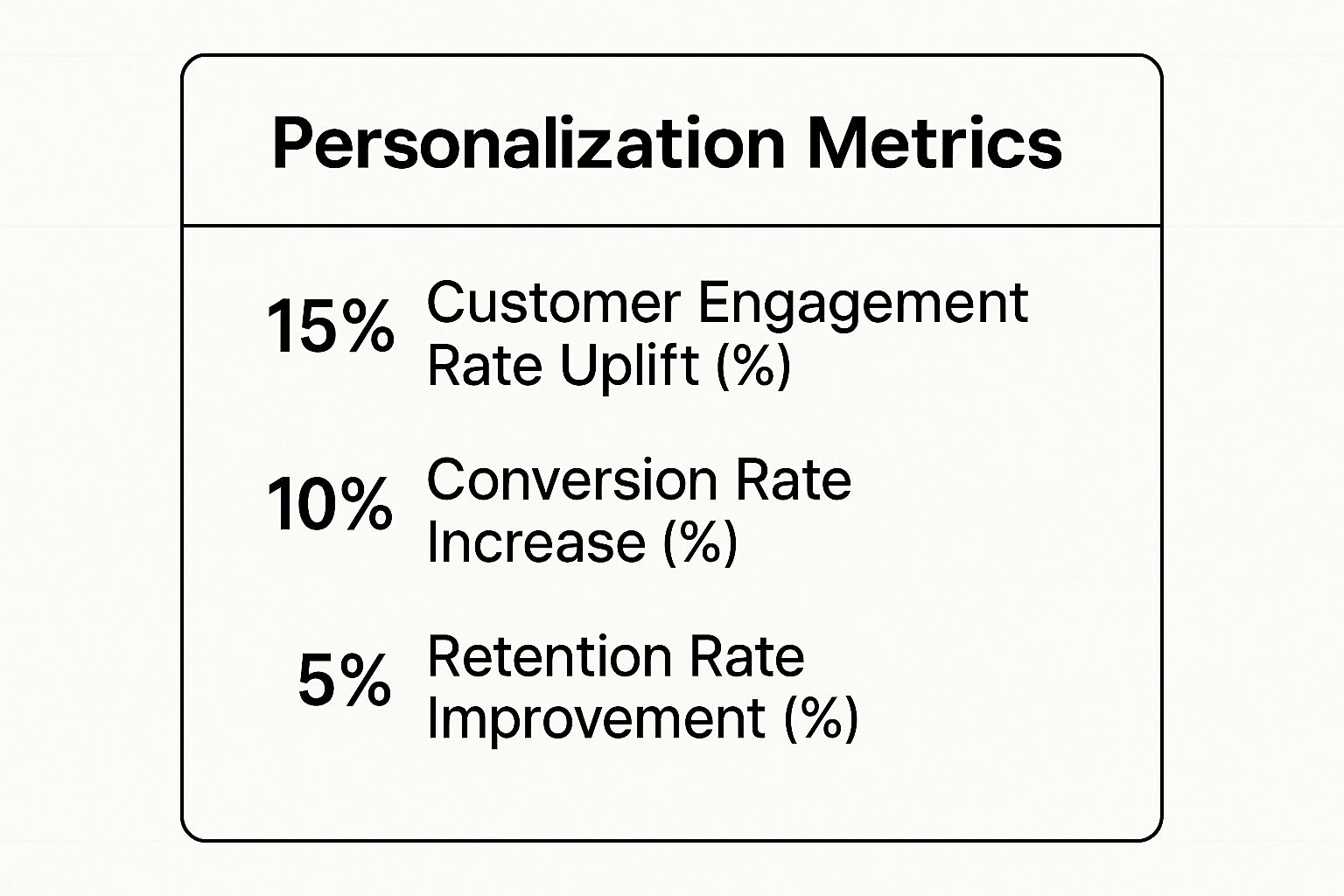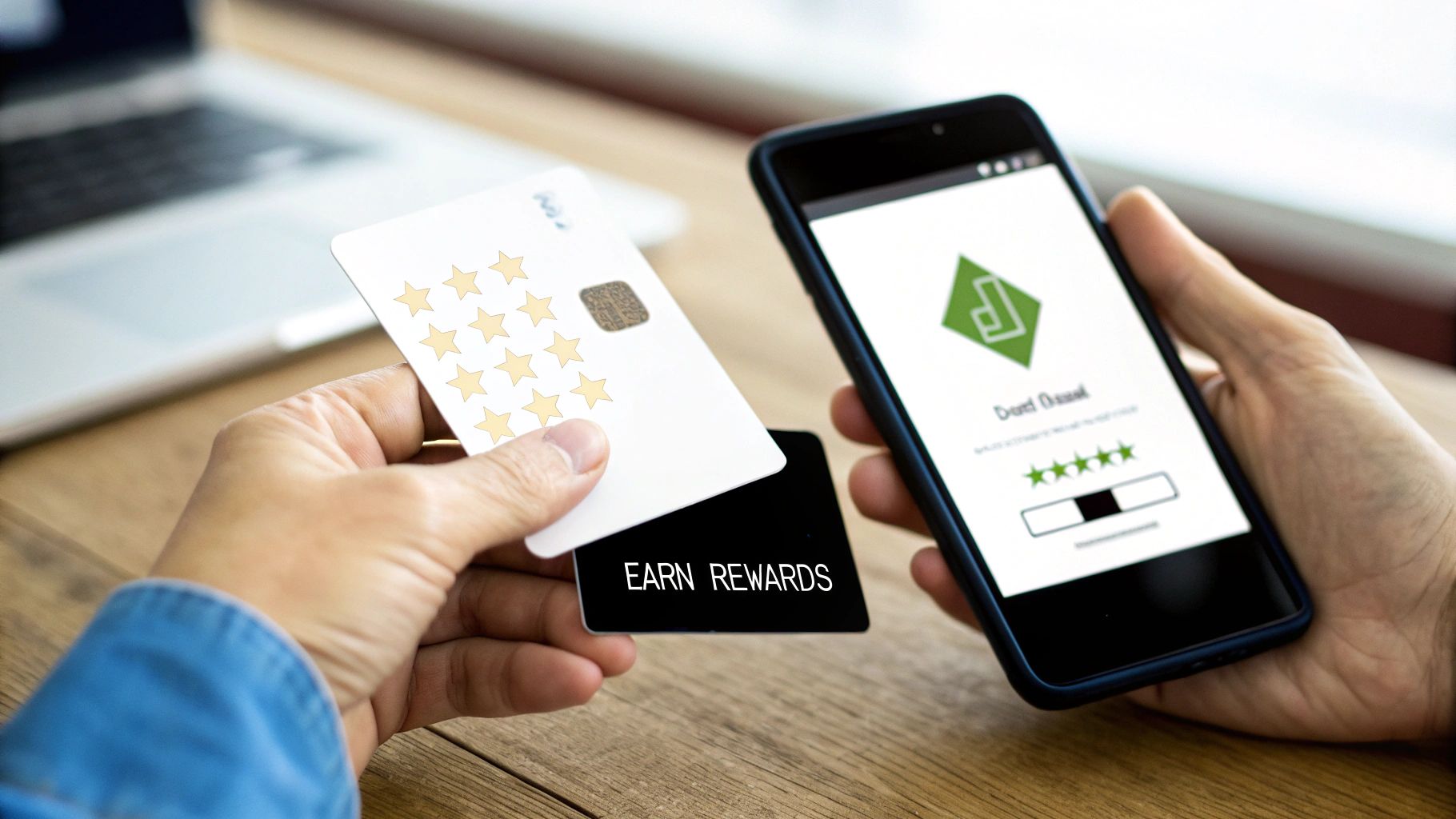10 Essential Customer Retention Strategies for 2025

What Are Customer Retention Strategies?
Customer retention strategies are structured methods businesses use to keep existing customers engaged, satisfied, and loyal over time. Research shows that just a 5% increase in customer retention can boost profitability by anywhere from 25% to 95%, making these strategies essential for sustainable growth.
Why Do Customer Retention Strategies Matter in 2025?
Customer retention has become more critical than ever because:
- Acquiring new customers costs 5-25x more than retaining existing ones
- Loyal customers spend 67% more than new customers
- 92% of consumers trust referrals from people they know
- Companies with strong retention see 2.5x revenue growth compared to competitors
10 Essential Customer Retention Strategies
1. Master the Personalized Customer Experience
Personalization involves using customer data—purchase history, browsing behavior, and preferences—to create tailored interactions across every touchpoint. Amazon's recommendation engine drives 35% of sales, while Netflix's personalized suggestions keep 80% of users subscribed.
Key Metrics of Effective Personalization
The following infographic highlights the direct impact of successful personalization initiatives on core business metrics.

As the data shows, a well-executed personalization strategy directly boosts engagement, conversions, and, most importantly, the rate at which customers return.
Implementation tactics:
- Start with foundational data: demographics and purchase history
- Implement gradually: customized email subjects, homepage recommendations
- Test and optimize: A/B test personalization algorithms
- Maintain transparency: clearly communicate data usage policies
- Focus on value: ensure interactions are helpful, not intrusive
2. Loyalty Programs and Rewards Systems
Loyalty programs reward repeat business through points, discounts, tiered benefits, or exclusive access. Starbucks Rewards accounts for over 50% of U.S. revenue, while Sephora's Beauty Insider drives 80% of total sales.

These programs are proven customer retention strategies because they create a tangible reason for a customer to choose your brand over a competitor.
Key success factors:
- Attainable rewards: members should earn their first reward quickly
- Dual value: combine monetary discounts with experiential rewards
- Mobile-first design: easy point tracking and redemption
- Data optimization: analyze which rewards drive engagement
- Regular updates: introduce new rewards and limited-time offers
3. Exceptional Customer Service Excellence
Exceptional customer service transforms support interactions from transactional necessities into loyalty-building opportunities. Companies with superior service experience see 5.7x more revenue than competitors.

Brands that master this strategy, like Zappos with its legendary service culture or Chewy with its personalized gestures, build an almost unbreakable bond with their audience.
Implementation approach:
- Hire for attitude, train for skill: prioritize empathy and problem-solving
- Empower frontline teams: give representatives authority to resolve issues
- Invest in training: comprehensive product knowledge and soft skills
- Measure what matters: track CSAT, NPS, and First Contact Resolution
- Act on feedback: systematically address recurring pain points
For teams looking to optimize their support analytics, consider reading our guide on customer support analytics to turn conversations into actionable improvements.
4. Customer Success and Onboarding Programs
Proactive customer success ensures customers achieve desired outcomes from day one. HubSpot's structured onboarding reduces 90-day churn by 40%, while Slack's gradual feature introduction increases platform adoption.
Strategic elements:
- Map the customer journey: identify milestones and friction points
- Create segmented onboarding: different paths for different use cases
- Use automation wisely: automate scalable touchpoints, humanize critical moments
- Define success metrics: communicate progress toward customer goals
- Develop proactive interventions: identify and re-engage at-risk customers
Why Customer Success Drives Retention
This video from customer success pioneer Lincoln Murphy explains how focusing on the customer's desired outcome is the key to sustainable growth and retention.
As Murphy explains, retention isn't just about keeping customers; it's about ensuring they are successful and growing alongside your business.
5. Data-Driven Retention Analytics
Data-driven retention analytics uses predictive modeling and behavioral analysis to identify churn risks before they become departures. Netflix's viewing pattern analysis and Spotify's churn prediction models boast 90%+ accuracy.
Implementation framework:
- Start with basics: track CLV, churn rate, repeat purchase rate
- Focus on actionable insights: prioritize metrics that inform decisions
- Combine data types: merge quantitative data with qualitative feedback
- Test interventions: A/B test retention tactics for at-risk segments
- Update regularly: retrain models as customer behavior evolves
Teams using Zendesk can enhance their analytics capabilities with our comparison of the best AI analytics add-ons available in 2025.
6. Community Building and Customer Engagement
Community building transforms customers from buyers into brand advocates through shared experiences and connections. Sephora's Beauty Insider Community and Peloton's social features create emotional investment that reduces churn by 30%.
Community development:
- Define clear guidelines: establish safe, positive environments
- Provide exclusive value: expert Q&As, early access, special content
- Recognize contributors: acknowledge active members with rewards
- Listen and integrate: use community feedback for product development
- Empower initiatives: encourage user-led events and content creation
7. Subscription and Recurring Revenue Models
Subscription models build loyalty by design, creating natural switching friction while increasing customer lifetime value. Adobe's Creative Cloud transition increased customer value by 300%, while Dollar Shave Club disrupted the entire CPG market.
Success strategies:
- Offer flexible tiers: basic, premium, and annual options
- Demonstrate ongoing value: regular updates and new features
- Reduce barriers: free trials and freemium models
- Win-back campaigns: special offers for canceled subscribers
- Focus on innovation: justify ongoing payments with improvements
8. Win-Back and Re-engagement Campaigns
Win-back campaigns reconnect with inactive customers using personalized offers based on historical data. Spotify's "Come Back" campaigns and Dropbox's storage upgrade offers successfully reactivate 15-25% of churned users.
Campaign optimization:
- Segment inactive audiences: group by value, recency, and likely churn reasons
- Test different incentives: discounts, gifts, exclusive access
- Create urgency: limited-time offers encourage immediate action
- Personalize outreach: reference past brand interactions
- Gather feedback: use campaigns to understand departure reasons
9. Product and Service Innovation Strategy
Continuous innovation keeps products relevant and gives customers compelling reasons to stay loyal. Apple's annual iOS updates and Tesla's over-the-air software improvements add significant value post-purchase.
Innovation approach:
- Involve customers: solicit feedback and invite beta participation
- Prioritize with data: use analytics to guide development roadmaps
- Balance innovation with usability: enhance rather than complicate
- Communicate roadmaps: build anticipation for upcoming features
- Dedicate resources: create innovation labs for experimentation
10. Omnichannel Customer Experience Strategy
Omnichannel strategy creates unified customer journeys across all touchpoints, allowing seamless transitions between channels. Sephora's integrated app, online, and retail experience demonstrates how coherence builds incredible brand loyalty.
Implementation steps:
- Map complete journeys: identify every brand touchpoint
- Invest in unified platforms: central CRM or customer data platform
- Train for cross-channel support: equip teams with complete customer history
- Test from customer perspective: experience common journeys yourself
- Use analytics: identify and fix transition friction points
Customer Retention Strategies Comparison Matrix
| Strategy | Implementation Complexity | Resource Requirements | Expected ROI | Best For |
|---|---|---|---|---|
| Personalized Experience | High | Substantial tech investment | 15-25% revenue lift | Data-rich businesses |
| Loyalty Programs | Medium-High | High operational costs | 12-18% CLV increase | Retail, subscriptions |
| Exceptional Service | High | Training & infrastructure | 5.7x revenue growth | Service-oriented industries |
| Customer Success | Medium-High | Dedicated staff | 40% churn reduction | SaaS, B2B, complex products |
| Data Analytics | High | Advanced infrastructure | 25-30% efficiency gains | Data-rich environments |
| Community Building | Medium-High | Ongoing management | 30% churn reduction | Engagement-focused brands |
| Subscription Models | Medium | Billing integration | 300% value increase | Digital services, SaaS |
| Win-Back Campaigns | Low-Medium | Marketing resources | 15-25% reactivation | Businesses with lapsed customers |
| Product Innovation | High | R&D investment | Competitive differentiation | Technology, evolving markets |
| Omnichannel Experience | High | Platform integration | Higher satisfaction | Multi-channel brands |
How to Implement Customer Retention Strategies
Start with a systematic approach to maximize impact and build momentum:
1. Audit Your Current State
- Analyze existing CSAT scores, churn rates, and customer feedback
- Identify the biggest gaps in your customer experience
- Prioritize areas with the highest potential impact
2. Choose Your Focus
- Select 1-2 strategies that align with business goals
- Consider your current resources and technical capabilities
- Start with strategies that can show quick wins
3. Set Measurable Goals
- Define specific, time-bound success metrics
- Track leading indicators, not just lagging ones
- Create dashboards for ongoing monitoring
4. Leverage Technology
- Use AI-powered analytics to understand customer behavior patterns
- Automate routine touchpoints while maintaining human connection
- Implement tools that can scale with your growth
For businesses looking to enhance their customer support analytics, platforms like Jemo can automatically analyze customer conversations to identify friction points and improvement opportunities, turning support interactions into retention insights.
Frequently Asked Questions About Customer Retention Strategies
What is the most cost-effective customer retention strategy? Win-back campaigns typically offer the highest ROI with minimal investment, successfully reactivating 15-25% of churned customers at a fraction of new acquisition costs.
How long does it take to see results from retention strategies? Basic improvements like enhanced customer service can show results within 30-60 days, while comprehensive strategies like loyalty programs may take 3-6 months to demonstrate full impact.
Which retention strategy works best for SaaS companies? SaaS companies typically see the best results from customer success programs combined with data-driven analytics, as these address the unique challenges of software adoption and ongoing value demonstration.
How do you measure the success of retention strategies? Key metrics include customer lifetime value (CLV), churn rate, Net Promoter Score (NPS), repeat purchase rate, and time to value. Track both leading and lagging indicators for comprehensive measurement.
Can small businesses implement these retention strategies? Yes, many strategies can be implemented at scale. Start with exceptional customer service and simple loyalty programs before advancing to more complex data-driven approaches.
What's the difference between retention and loyalty? Retention focuses on preventing customers from leaving, while loyalty involves emotional connection that makes customers advocates. The best strategies address both aspects.
How often should retention strategies be updated? Review and update strategies quarterly, but continuously monitor performance metrics. Customer expectations and market conditions change rapidly, requiring agile adjustments.
What role does technology play in modern retention strategies? Technology enables personalization at scale, predictive analytics for churn prevention, automated customer success touchpoints, and comprehensive data analysis that would be impossible manually.
How do retention strategies differ by industry? B2B SaaS focuses on product adoption and success metrics, retail emphasizes loyalty programs and personalization, while service industries prioritize exceptional experience and community building.
What's the biggest mistake companies make with retention? The most common mistake is treating retention as a reactive response to churn rather than a proactive, systematic approach to customer success and satisfaction.
Ready to turn your customer conversations into retention insights? Jemo analyzes support tickets, calls, and reviews to automatically identify friction points and improvement opportunities in your customer experience. Start making data-driven retention decisions by visiting Jemo today.
